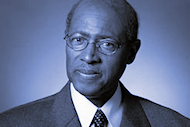What YOU need to know about the Proposed School Bond Issue
 On November 4th, as we are casting our votes in the Presidential and Congressional elections, we will also be asked to decide the fate of a proposed $370,000,000.00 school bond issue. To help shed some light on this particular issue and on other contentious issues facing the community, the Wichita Branch is launching a community mini-debate series.
On November 4th, as we are casting our votes in the Presidential and Congressional elections, we will also be asked to decide the fate of a proposed $370,000,000.00 school bond issue. To help shed some light on this particular issue and on other contentious issues facing the community, the Wichita Branch is launching a community mini-debate series.
The purpose of this series is to shed light on controversial or consequential issues by obtaining and making available to the community, the most accurate and detailed information available, both pro and con, gathered directly from the primary stake-holders and/or decision makers. The series will deal with issues and questions in a manner that is far more detailed or specific than your would normally see in a candidate questionairre or mailer.
With regard to the proposed School bond issue, we prepared a list of 5 questions which were presented to Mr. Lynn Rogers; President of the USD259 School Board - a leading proponent of the Bond Issue, and to Mr. Bob Weeks; Principal of New Liberty Media LLC - a leading opponent of the Bond issue.
Their Unedited responses are presented here for your consideration...
~~~~~~
1. Wichita voters will soon decide the fate of a $370,000,000.00 bond issue. If passed, this would be the largest school bond in Kansas history. The proposed bond includes building construction, facility repairs, facility improvements, and fine arts and athletic facility enhancements and improvements. Should the 370 million dollar price tag be cause for concern? (Please explain why or why not)
Bob Weeks:
Yes, the price tag of the proposed bond issue is a cause for concern. Bond supporters make the case that the bond issue adds only a small amount to the taxes that homeowners will pay. This ignores, however, the huge tax burden that USD 259 spending already imposes on the citizens of USD 259: some $1,749 per year for each person living in the district, considering federal, state, and local taxes (2007 figures).
The extra taxes that homeowners pay is only a small part of the total picture. Landlords will increase rents. Business taxes will rise, and businesses will pass these costs along to their customers as much as they can. Utility taxes will increase even further, and regulated utilities are able to pass through their increase costs to their customers in the form of rate increases, causing hardship to many customers.
Further, the $370 million cost of the bond issue is only a start. Consider that part of the purpose of the bond issue is to reduce class size. The bond issue will pay for building the new classrooms. That construction is a one-time cost. Ongoing costs, however, include increases in maintenance, utilities, janitorial service, and the personnel costs of more teachers, teachers aids, and instructional coaches. Couple this with the fact that research on the benefit of smaller class sizes is mixed at best. Other factors such as teacher effectiveness are more important to the success of children, and a consequence of reducing class size is that more children will be taught by less-qualified teachers.
Lynn Rogers:
This Bond issue comes down to doing what’s right for kids and what’s right for Wichita. Because our District is large, the numbers are going to be bigger but on a per child basis, it is less than every other School District in Sedgwick County. (For instance, if Valley Center was the same size of Wichita, their $57 million bond issue would be the equivalent of $1.2 Billion.)
Our concern should be giving our kids the best opportunity for success. Smaller class sizes, having seats for all kids in all neighborhoods – even for those who have been forcibly bused for years, safer kids because we have safe rooms in every school and brighter futures.
~~~~~
2. Setting aside the cost of the proposed bond for just a moment, what would you characterize as the district's most necessary improvements or changes?
Bob Weeks:
The Wichita school district says it wants to be held accountable, but in practice avoids reform that will lead to market-based accountability. One thing the district could implement immediately is open enrollment within USD 259, where students could attend any school that has space for them. The State of Kansas could implement open enrollment among school districts.
Further, Kansas has extremely weak charter school laws. It is nearly impossible to gain approval to start a charter school. While not a panacea, charter schools provide a way to introduce the creativity and energy of market-based reform and competition into the system.
Earlier this year, two middle schools in Wichita had to face the most severe remedial efforts that the No Child Left Behind law provides. But then-superintendent Winston Brooks said that he expected the leadership team at both schools to remain in place. Also, because of union contracts, all the teachers were guaranteed a job somewhere in the school system. What type of reform is this? Who is being held accountable here?
Lynn Rogers:
This District is committed to raising student achievement, lowering class sizes, eliminating the achievement gap and providing safe schools for all kids. We have 11 years of rising test scores to show we are on the right path. Isn’t it time that our kids also have quality facilities.
~~~~~
3. How would you characterize the proposed fine arts and athletic improvements? "Investment" or "Extravagance" or "Other"? (Please explain)
Bob Weeks:
A fundamental problem the school district must overcome is that decisions about spending are not made freely by willing participants on both sides of the transaction. Decisions are made by special interest groups with intense interest in, and a large stake in, the outcome. Parents, naturally, want the best of everything for their children, no matter what the cost. (When someone else is paying, it's very easy to throw costs to the wind.) Teachers working in schools with facilities that are not new and shiny are very interested in improvements. Administrators want to expand their budgets and their domain of influence.
These groups, therefore, have a stake in building as many new and upgraded facilities as they think they can. Cost-effective alternatives that might do the job but aren't as nice as something shiny and new are not given due consideration. The group Citizens for Better Education has recently released a position paper that describes some alternative measures the district might take. It can be read at http://abetterwaywichita.org/Wichita-School-Bond-Position-Paper-August-30-2008.pdf.
Lynn Rogers:
Fine arts and athletics tie kids into school, keeping them there so they can graduate. All research studies show that kids involved in these fine arts score better on tests and are more likely to pursue higher education. Fine arts and physical education are as important to a well rounded citizen as ANY other subject. They are required for graduation!
~~~~~
4. How would you characterize the proposed facility improvements and construction? "Necessary" or "Imprudent" or "Other"? (Please explain)
Bob Weeks:
The same problems apply this this questions as to the previous.
We question the district's priorities. The district wants to build safe rooms at all schools that don't already have one as part of the current bond issue. But they've had the opportunity to do so recently. For example, Isley Traditional Elementary Magnet underwent extensive renovation in 2005, but no FEMA safe room was added. Brooks Tech Middle Magnet was renovated in 2004, and no FEMA room was added.
In 2000, the focus of the bond issue was air conditioning instead of safe rooms. What does this say about priorities?
Lynn Rogers:
This would only be the 2nd Bond issue passed in USD 259 since the 1970s. The 2000 Bond issue identified over $500 million in improvements but we only did $285.4 million at that time. Those needs did not disappear, they only got more expensive. This Bond issue invests in our Kids and their futures. That is important to everyone on Wichita!
The Plan includes building a new Isely School, major remodeling on Spacht Academy and building a new high school and middle school in the Northeast quadrant. These improvements will make sure we have room for every child who chooses not to be bused any longer.
~~~~~
5. If the bond issue does not pass, how would or should the district handle the proposed improvements?
Bob Weeks:
The district has a capital improvement budget funded by a 7 mill tax levy, supplemented by funds from the state. Perhaps the district could make the case for a small increase in this tax.
Alternatively, many people I talk to believe that the district has some needs, but not $370 million worth. These people would likely be receptive to a much smaller bond issue that addresses the needs they believe are important.
Lynn Rogers:
If the District tied to do these improvements out to regular funds, it would either take 20 plus years or class sizes would have to be increased drastically to make funds available.
***
Our concern should be giving our kids the best opportunity for success. Smaller class sizes, having seats for all kids in all neighborhoods – even for those who have been forcibly bused for years, safer kids because we have safe rooms in every school and brighter futures.
~~~~~
2. Setting aside the cost of the proposed bond for just a moment, what would you characterize as the district's most necessary improvements or changes?
Bob Weeks:
The Wichita school district says it wants to be held accountable, but in practice avoids reform that will lead to market-based accountability. One thing the district could implement immediately is open enrollment within USD 259, where students could attend any school that has space for them. The State of Kansas could implement open enrollment among school districts.
Further, Kansas has extremely weak charter school laws. It is nearly impossible to gain approval to start a charter school. While not a panacea, charter schools provide a way to introduce the creativity and energy of market-based reform and competition into the system.
Earlier this year, two middle schools in Wichita had to face the most severe remedial efforts that the No Child Left Behind law provides. But then-superintendent Winston Brooks said that he expected the leadership team at both schools to remain in place. Also, because of union contracts, all the teachers were guaranteed a job somewhere in the school system. What type of reform is this? Who is being held accountable here?
Lynn Rogers:
This District is committed to raising student achievement, lowering class sizes, eliminating the achievement gap and providing safe schools for all kids. We have 11 years of rising test scores to show we are on the right path. Isn’t it time that our kids also have quality facilities.
~~~~~
3. How would you characterize the proposed fine arts and athletic improvements? "Investment" or "Extravagance" or "Other"? (Please explain)
Bob Weeks:
A fundamental problem the school district must overcome is that decisions about spending are not made freely by willing participants on both sides of the transaction. Decisions are made by special interest groups with intense interest in, and a large stake in, the outcome. Parents, naturally, want the best of everything for their children, no matter what the cost. (When someone else is paying, it's very easy to throw costs to the wind.) Teachers working in schools with facilities that are not new and shiny are very interested in improvements. Administrators want to expand their budgets and their domain of influence.
These groups, therefore, have a stake in building as many new and upgraded facilities as they think they can. Cost-effective alternatives that might do the job but aren't as nice as something shiny and new are not given due consideration. The group Citizens for Better Education has recently released a position paper that describes some alternative measures the district might take. It can be read at http://abetterwaywichita.org/Wichita-School-Bond-Position-Paper-August-30-2008.pdf.
Lynn Rogers:
Fine arts and athletics tie kids into school, keeping them there so they can graduate. All research studies show that kids involved in these fine arts score better on tests and are more likely to pursue higher education. Fine arts and physical education are as important to a well rounded citizen as ANY other subject. They are required for graduation!
~~~~~
4. How would you characterize the proposed facility improvements and construction? "Necessary" or "Imprudent" or "Other"? (Please explain)
Bob Weeks:
The same problems apply this this questions as to the previous.
We question the district's priorities. The district wants to build safe rooms at all schools that don't already have one as part of the current bond issue. But they've had the opportunity to do so recently. For example, Isley Traditional Elementary Magnet underwent extensive renovation in 2005, but no FEMA safe room was added. Brooks Tech Middle Magnet was renovated in 2004, and no FEMA room was added.
In 2000, the focus of the bond issue was air conditioning instead of safe rooms. What does this say about priorities?
Lynn Rogers:
This would only be the 2nd Bond issue passed in USD 259 since the 1970s. The 2000 Bond issue identified over $500 million in improvements but we only did $285.4 million at that time. Those needs did not disappear, they only got more expensive. This Bond issue invests in our Kids and their futures. That is important to everyone on Wichita!
The Plan includes building a new Isely School, major remodeling on Spacht Academy and building a new high school and middle school in the Northeast quadrant. These improvements will make sure we have room for every child who chooses not to be bused any longer.
~~~~~
5. If the bond issue does not pass, how would or should the district handle the proposed improvements?
Bob Weeks:
The district has a capital improvement budget funded by a 7 mill tax levy, supplemented by funds from the state. Perhaps the district could make the case for a small increase in this tax.
Alternatively, many people I talk to believe that the district has some needs, but not $370 million worth. These people would likely be receptive to a much smaller bond issue that addresses the needs they believe are important.
Lynn Rogers:
If the District tied to do these improvements out to regular funds, it would either take 20 plus years or class sizes would have to be increased drastically to make funds available.
***
Here's YOUR opportunity to sound off - Post your comments or questions concerning the Bond issue here by clicking the link below...










